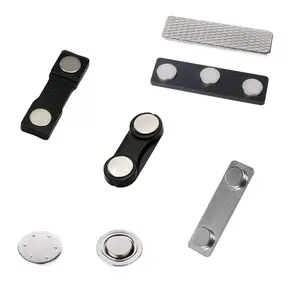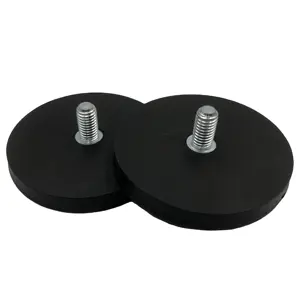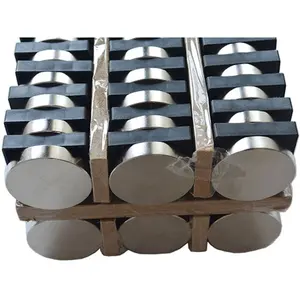Introduction
In the realm of technology, the smallest components often hold the most power. One such component is the humble magnet. Despite its size, it plays a pivotal role in the functioning of various everyday technologies, from smartphones to medical devices, and even automotive technology. This article delves into the fascinating world of magnetism, exploring how the power of small magnets is harnessed in various applications. It also looks at the future of small magnets in technology, highlighting emerging innovations and addressing potential challenges.
The Fascinating World of Magnets
Magnetism is a fascinating force exerted by magnets when they attract or repel each other. This force is caused by the motion of electric charges within atoms. In certain substances like iron, cobalt, and nickel, most electrons spin in the same direction, making these substances strongly magnetic. However, to become magnetized, these substances must enter the magnetic field of an existing magnet. All magnets, regardless of size, have north and south poles that either attract or repel each other. This fundamental understanding of magnetism is key to unlocking the power of small magnets in everyday technology.
Understanding the Power of Small Magnets
Small magnets generate magnetic fields, the strength of which is measured in amperes per meter (A/m). This strength, also known as magnetic field intensity, can be influenced by factors such as the amount of electric current and the shape of the conductor. For instance, a coiled conductor like a solenoid can increase the magnetic field strength. The strength of a magnetic field is directly proportional to the density of the field lines, with denser lines indicating a stronger field. Understanding magnetic field strength is crucial as it underpins the functioning of many everyday technologies.
Small Magnets in Everyday Technology
Small NdFeB magnets are integral to the functioning of smartphones and personal electronics. They are used in speakers, receivers, vibration motors, taptic feedback motors, and camera auto-focus mechanisms. Additionally, they are found in external devices like earbuds, earphones, and magnetic wall chargers. These magnets are small but powerful, contributing to the miniaturization and improved performance of these devices. The high strength of NdFeB magnets has driven advancements in smartphone camera technology and enhanced the sound quality of earphones.
In Consumer Electronics
Small magnets, particularly neodymium ones, are integral to consumer electronics. They allow engineers to achieve a high attractive force while using less space in an enclosure. These magnets are found in common modules like speakers, vibration motors, and actuators. They also play a key role in custom accessories like cases and chargers. For instance, some popular smartphones use a set of custom magnets in their new wireless chargers. Understanding how magnets are made and their design considerations are crucial for incorporating them into electronic designs.
In Medical Devices
Small magnets play a crucial role in modern medicine. They are widely used due to their physical and chemical properties, finding applications ranging from retention to guiding catheters in brain surgery. Permanent magnets have significant clinical use in dentures, maxillofacial applications, fracture healing, drug delivery systems, orthopedics, and MRI scanners. Moreover, magnetic nanoparticles have gained popularity due to their applications in cancer treatment and biosensing. They are effective thermoelectric materials, imaging agents, and vehicles for drug delivery. These applications of small magnets in medical devices showcase their immense potential and versatility.
In Automotive Technology
Small magnets play a crucial role in automotive technology. They're found in various vehicle systems, including sensors, actuators, and motors. Different types of magnetic materials, such as neodymium iron boron magnets and ceramic magnets, are used based on factors like temperature exposure, space, and cost. For instance, ceramic magnets enhance anti-lock braking systems (ABS), while neodymium magnets, due to their high power and small size, are ideal for applications requiring lightweight or compact magnets. They're even used in electric vehicle drive trains to boost efficiency without compromising performance.
The Future of Small Magnets in Technology
The future of small magnets in technology is promising, with new materials and applications constantly being developed. They are being used in energy storage systems, and magnetic refrigeration is an emerging technology. Magnets are also being explored for use in transportation, such as in maglev trains and personal transportation devices like hoverboards and flying cars. As technology advances, we can expect to see even more innovative uses of small magnets.
Emerging Innovations
Emerging innovations in magnet technology, particularly high-temperature superconductors (HTS), are revolutionizing various industries. Leading research centers are at the forefront of these advancements, developing HTS magnets that offer higher fields, reduced complexity, and smaller footprints. One recent innovation is a 40-mm warm-bore, non-insulated magnet capable of producing fields in excess of 6 Tesla. This magnet, wound from 500 meters of 12-mm REBCO tape, uses conductive cooling and has been successfully tested at currents up to 700 amps.
Potential Challenges and Solutions
Small magnets, particularly high-powered or 'rare-earth' magnets, pose a significant challenge when used in children's toys. If swallowed, they can cause severe internal injuries. Despite a new safety standard in 2022, some toys with high-powered magnets are still on the market. Various safety organizations have been actively involved in ensuring safety standards, but the risk remains. It's crucial to keep products with small or loose magnets away from young children and to be vigilant about potential recalls. The challenge lies in balancing the utility of these magnets with the potential risks they pose.
Conclusion
The power of small magnets is undeniably immense, permeating various aspects of our daily lives. From enhancing the performance of consumer electronics to playing a crucial role in medical procedures and automotive technology, their influence is far-reaching. As we look to the future, the potential of small magnets continues to expand, with new materials and applications constantly being developed. However, it's important to balance this utility with safety, particularly when it comes to children's toys. As we continue to unlock the power of small magnets, we must also ensure that their use is safe and responsible.




































 浙公网安备 33010002000092号
浙公网安备 33010002000092号 浙B2-20120091-4
浙B2-20120091-4